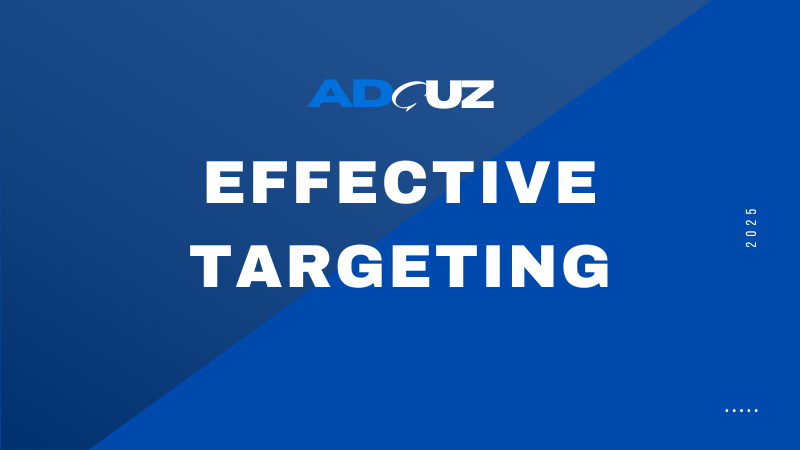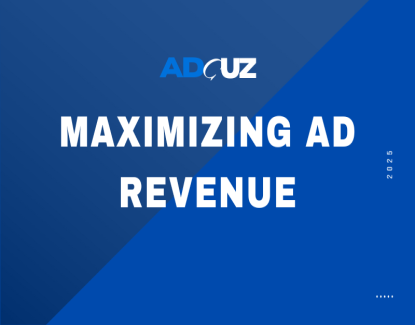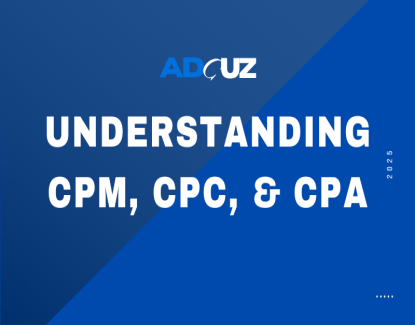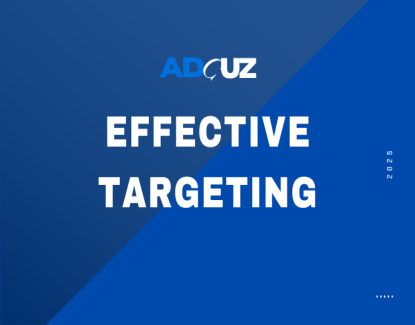
- 06 Jan 2025
Effective Targeting Strategies for Advertisers
In the world of advertising, a successful campaign is no longer about shouting your message to the masses. It's about whispering it directly to the people who are most likely to listen. This is the power of ad targeting. By focusing your ad spend on specific, relevant audiences, you can dramatically increase your return on investment (ROI) and build stronger, more meaningful connections with potential customers.
Here are some of the most effective targeting strategies that every advertiser should master.
1. Demographic and Geographic Targeting
These are the foundational layers of any targeting strategy. They allow you to define your audience based on basic, identifiable traits.
Demographic Targeting: This involves reaching users based on their age, gender, income level, education, marital status, and parental status. It’s the first step to ensuring your ads are seen by the right people. For example, a luxury car brand would target an older, higher-income demographic, while a toy company would focus on parents.
Geographic Targeting: This strategy lets you show ads to users in specific locations, from an entire country down to a specific city, state, or even zip code. This is particularly useful for local businesses, as it prevents ad spend from being wasted on people who can't physically visit their store. It’s also effective for national brands with location-specific promotions.
2. Contextual Targeting
Contextual targeting is a privacy-friendly, powerful strategy that aligns your ads with the content on a webpage. Instead of targeting the user, you target the topic.
How it works: Ad platforms analyze the keywords, topics, and overall content of a webpage. An ad for hiking gear would be placed on a blog post about the best trails in the Pacific Northwest, and a coffee ad might appear on a page with a latte recipe.
Why it's effective: This method ensures your ad is highly relevant to a user's current mindset and interests, as they are actively engaged with related content. As data privacy regulations become stricter, contextual targeting is becoming a "future-proof" alternative to cookie-based methods.
3. Behavioral and Interest-Based Targeting
These strategies delve deeper into a user's digital footprint to understand their preferences.
Interest-Based Targeting: This targets users based on their expressed interests, such as their social media likes, follows, and the content they engage with. A user who follows multiple sports teams and sports news pages on social media can be targeted with ads for sporting goods or event tickets.
Behavioral Targeting: This is a more advanced approach that uses a user’s past online behavior—like websites they've visited, products they've searched for, or items they've added to a cart—to create a detailed profile. This data is used to show them ads for products they've shown an intent to purchase. The key distinction is that behavioral targeting uses past actions, while contextual targeting focuses on the present moment.
4. Retargeting (or Remarketing)
This is one of the most effective targeting strategies for driving conversions. Retargeting campaigns show ads specifically to users who have previously interacted with your brand.
How it works: When a user visits your website, a small, anonymous piece of code (a pixel or cookie) is placed in their browser. This allows your ads to follow them as they browse other websites, reminding them to complete an action, such as a purchase they abandoned.
Why it's effective: Most website visitors don't convert on their first visit. Retargeting keeps your brand top-of-mind and provides a powerful nudge to bring them back. You can also segment retargeting campaigns to be highly specific, such as offering a discount to users who left items in their shopping cart.
5. Lookalike Audiences
Lookalike audiences are a game-changer for expanding your reach to new customers who are highly likely to convert.
How it works: You provide an ad platform with a "seed" list of your most valuable customers (e.g., a list of recent purchasers or your email subscribers). The platform's algorithm then analyzes this data to find new users with similar demographic, behavioral, and interest-based characteristics.
Why it's effective: This strategy allows you to tap into a vast pool of potential customers who share traits with your best existing customers. It helps you scale your campaigns efficiently without having to manually guess who your next best customer might be.
Combining Strategies for Maximum Impact
The most successful ad campaigns rarely rely on a single targeting method. The real power comes from layering these strategies to create a highly refined and effective campaign.
For example, a clothing retailer could:
Use demographic targeting to reach men and women between the ages of 25 and 45.
Apply geographic targeting to focus on users in major urban areas.
Use interest-based targeting to narrow the audience to those interested in fashion and lifestyle brands.
Finally, use retargeting to show ads for specific items to users who visited their product pages but didn't buy.
By combining these layers, you move from a broad, low-impact campaign to a hyper-targeted one that delivers the right message to the right person at the right time, maximizing every advertising dollar.





